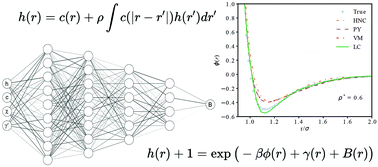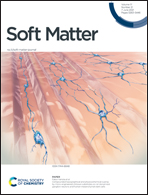Data-driven approximations to the bridge function yield improved closures for the Ornstein–Zernike equation†
Abstract
A key challenge for soft materials design and coarse-graining simulations is determining interaction potentials between components that give rise to desired condensed-phase structures. In theory, the Ornstein–Zernike equation provides an elegant framework for solving this inverse problem. Pioneering work in liquid state theory derived analytical closures for the framework. However, these analytical closures are approximations, valid only for specific classes of interaction potentials. In this work, we combine the physics of liquid state theory with machine learning to infer a closure directly from simulation data. The resulting closure is more accurate than commonly used closures across a broad range of interaction potentials.



 Please wait while we load your content...
Please wait while we load your content...